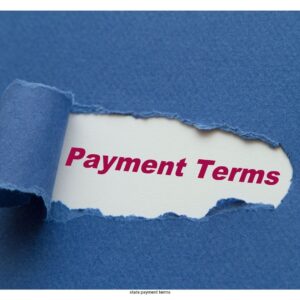Customers and Clients-The Secret to Getting Paid Wallet with $100 Bills Is Having Proactive Policies •••
SUSAN WARD SUSAN WARD SUSAN WARD SUSAN WARD
On the 25th of June, 2019, we updated our information.
What small business owner hasn’t been concerned about not being paid at one point or another? Whether it’s a large number of customers with past-due accounts or a client who appears hesitant to pay for a job well done, not getting paid is one of the most aggravating elements of running a small business – and, when it chokes off your cash flow, one of the most dangerous, as well.
Here are seven methods for ensuring that you are compensated for the goods and services you provide.
Salon Business Plan
1. Do not immediately extend credit to new customers/clients.

Small businesses, like major organisations, require credit policies in place that outline how to choose which customers or clients will be given credit and under what circumstances.
Doing Credit Checks Can Pay Off discusses how to do consumer credit checks in Canada while maintaining confidentiality. How to Conduct a Credit Check on a Potential Client The procedure in the United States is explained by Tenant. It may be your company’s policy to never accept personal checks as payment, preferring instead cash, debit, and credit cards.
If you want to provide credit to specific clients or customers beyond that, you should have a mechanism in place that requires the customer or client to fill out a credit application and/or conduct a customer credit check.
A credit report can cost anywhere from $20 to over $1000, depending on how extensive the report is, but it’s money well spent if it stops you from not being paid for that major work or a significant sale.
LinkedIn Can Help You Find Work in 10 Ways You Didn’t Know About
2. Accept a portion of the payment in advance.
Are you concerned that you won’t get paid for that sale or service? Ask for a deposit or retainer up advance if the price of the goods or services is reasonable. For higher-ticket commodities and services, this is an increasingly typical corporate practise; no sensible client should be insulted by such a request.
For example, if you provide services, you might charge a retainer of a percentage of the estimated cost or a fixed amount before you begin working on a project, with the balance due when the assignment is completed. Alternatively, divide the bill into thirds and ask for a third before work begins, a third halfway through the project, and a third at the end.
Partial payment has the advantage of ensuring that you are paid something even if the consumer or client defaults on the remaining balance.
3. Send out invoices as soon as possible.
This may sound self-evident, but I’ve worked with companies that have failed to bill me for months on end for products or services delivered. Apart from being inconvenient since I want to know what the charges are, I can’t help but wonder if the rest of their business methods are also shoddy. Why should I be in any haste to pay them, given their own example?
Customer/client bills should be created and presented as soon as practically possible after delivery of your goods or services to the customer. Failure to do so may give the impression that your company is unconcerned about being paid, causing your cash flow to be slowed for no reason. If you wait until the end of the month to generate your invoices, you might be adding up to thirty days to your cash flow conversion time! Quick invoicing is made simple with small business accounting software and POS (Point of Sale) systems.
4. Clearly and openly state payment terms.

If you value fast payment, don’t leave it up to your customer or client to pick when your invoice is due. Make sure your invoices specify specific payment terms, such as “Payable within 30 days” or “Due Date: ____________,” rather of nebulous statements like “Payable upon receipt.”
5. Reward clients who pay on time.
Waving a carrot in front of customers or clients, such as a discount for paying invoices early, can also help you be paid faster. For example, if your standard payment policy is 30 days, provide a little discount to consumers who pay within 14 days, such as 2%.
6. Create a procedure for following up with consumers who have missed payments.
The sooner you follow up on a missing payment, the more likely you are to get paid. So, if you need to, put up a system for identifying late payments and a systematic protocol for notifying customers or clients when their payments are late.
You can contact the customer through a variety of means nowadays. Some, on the other hand, are more effective than others. Start with a phone call to “touch base” with the customer or client if time allows. You want to come across as kind and courteous, not aggressive. Sometimes a person has just forgotten or missed seeing a bill, and all it takes is a quick phone call to get paid – meaning you don’t have to go through the remainder of the collection process.
If time does not permit or a phone contact is fruitless, the next stage in your collection method is to send a letter stating that the bill is past due and seeking the customer’s quick attention to the situation, followed by a series of collection letters showing increasing worry.
When you send collection letters by email, you get a copy of the letter for your records, as well as a date stamp on your message. However, because of email screening and overload, sending collection letters to customers and clients by email may not be the most effective method. Depending on the magnitude and importance of the obligation, you may also want to submit them by regular mail, fax, or even courier.
If you don’t get a response to these letters, you’ll have to decide whether to write off the amount as a bad debt or report it in.
If you don’t get a response to these letters, you’ll have to decide whether to write off the amount as a bad debt or turn it over to a collection agency.
7. Hire a collection agency to handle the past-due bill.

Unfortunately, even if you follow all of these proactive methods to get paid on time, you’ll still have some accounts that are past due. When the carrot fails, it’s time to use the stick, also known as collections.
For a fee or a percentage of the total amount outstanding, collection agencies recover debts. This charge is determined by the age of the debts (the younger the better) and the amount of business a creditor has to offer. In the industry, the usual rate for business-to-business accounts is 30%. Consumer accounts are collected at a higher rate.
Collection agencies, on the other hand, have experience and understanding in debt collection that we, as small business owners, lack, and hiring one might be well worth it if the volume of outstanding accounts receivable warrants it.
If you do decide to engage a collections agency, keep in mind that, while collection agencies in Canada are controlled by the province in which they operate, this does not imply you must hire a local agency; rather, you must ensure that the firm you hire is fully licenced and bonded in your province.
